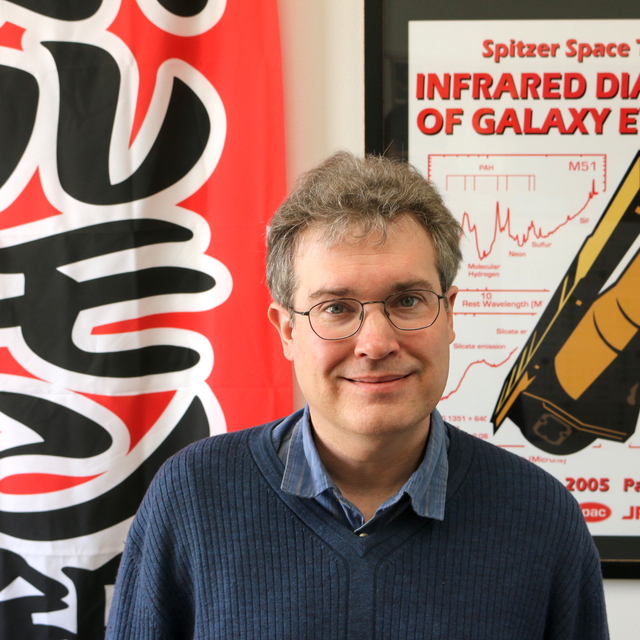
UV-bright Star-forming Clumps and Their Host Galaxies in UVCANDELS at 0.5 ≤ z ≤ 1
October 2023 • 2023ApJ...955..106M
Abstract • Giant star-forming clumps are a prominent feature of star-forming galaxies (SFGs) and contain important clues on galaxy formation and evolution. However, the basic demographics of clumps and their host galaxies remain uncertain. Using the Hubble Space Telescope/Wide Field Camera 3 F275W images from the Ultraviolet Imaging of the Cosmic Assembly Near-infrared Deep Extragalactic Legacy Survey, we detect and analyze giant star-forming clumps in galaxies at 0.5 ≤ z ≤ 1, connecting two epochs when clumps are common (at cosmic high noon, z ~ 2) and rare (in the local Universe). We construct a clump sample whose rest-frame 1600 Å luminosity is 3 times higher than the most luminous local H II regions (M UV ≤ -16 AB). In our sample, 35% ± 3% of low-mass galaxies (log[M ∗/M ⊙] < 10) are clumpy (i.e., containing at least one off-center clump). This fraction changes to 22% ± 3% and 22% ± 4% for intermediate (10 ≤ log[M ∗/M ⊙] ≤ 10.5) and high-mass (log[M ∗/M ⊙] > 10.5) galaxies, in agreement with previous studies. When compared to similar-mass nonclumpy SFGs, low- and intermediate-mass clumpy SFGs tend to have higher star formation rates (SFRs) and bluer rest-frame U - V colors, while high-mass clumpy SFGs tend to be larger than nonclumpy SFGs. However, clumpy and nonclumpy SFGs have similar Sérsic index, indicating a similar underlying density profile. Furthermore, we investigate how the UV luminosity of star-forming regions correlates with the physical properties of host galaxies. On average, more luminous star-forming regions reside in more luminous, smaller, and/or higher specific SFR galaxies and are found closer to their hosts' galactic centers.
Links
- PREPRINT http://arxiv.org/abs/2308.00041
- NED https://ned.ipac.caltech.edu/uri/NED::InRefcode/2023ApJ...955..106M
- ELECTR https://doi.org/10.3847/1538-4357/aced3e
- SIMBAD https://simbad.u-strasbg.fr/simbad/sim-ref?querymethod=bib&simbo=on&submit=submit+bibcode&bibcode=2023ApJ...955..106M
- PDF https://iopscience.iop.org/article/10.3847/1538-4357/aced3e/pdf
- DATA https://archive.stsci.edu/mastbibref.php?bibcode=2023ApJ...955..106M
- DATA https://doi.org/10.17909/96zb-g146
- DATA https://hst.esac.esa.int/ehst/#/pages/search;bibcode=2023ApJ...955..106M




